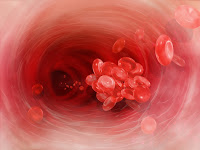News broke yesterday that Pittsburgh Penguins forward Pascal Dupuis is suffering from a pulmonary embolism, or a blood clot in his lungs. Unfortunately this isn’t Dupuis’s first blood clot; he had another one after a recent ACL tear. However, Dupuis is not the only NHL player to battle blood clots lately. Many hockey players have been sidelined in the past few years because of blood clots, and these clots could potentially be career ending.
In 2012, Adam McQuaid of the Boston Bruins had a blood clot in his chest near his collarbone. In 2013, another member of the Pittsburgh Penguins, Tomas Vokoun, dealt with a clot in his pelvis. This was also his second go-around with blood clots. More recently, in the summer of 2014, Kimmo Timonen of the Philadelphia Flyers had clots in his right leg and both of his lungs. Considering all of these athletes are healthy, in great shape, and under the age of 40, who would have ever guessed they could develop blood clots like this?
Some of these players developed a condition called deep vein thrombosis (DVT). It’s a fancy name for blood clots – ones that can occur anywhere in your body but often develop in your legs. Most people get them after injuries, surgeries, or sitting still for too long, such as on long bus or plane rides. Symptoms include redness, pain, and swelling in your arms or legs. Parts of these clots can break off and travel to other places in your body, causing serious complications. If a clot travels to your lung, it’s called a pulmonary embolism (PE). This can be deadly. Symptoms of this may include chest pain, breathing fast, coughing, coughing up blood, or anxiousness. Although certain medical issues can increase your risk for these clots, they unfortunately can affect anyone at any age.
The biggest problem with both DVT and PE is lack of awareness. More people die of blood clots each year in the United States than AIDS, breast cancer, ALS, and car accidents combined. That’s hundreds of thousands of people. That’s one person every 6 minutes—and that doesn’t count many more who survive and have long-term implications. Take a few minutes to educate yourself about blood clots at www.dvtaware.net, as it could save your life. Clots are easy enough to prevent – just know your risks and move your feet to keep the blood moving. Please share this website and help spread the word!
http://www.nhl.com/ice/news.htm?id=731331









